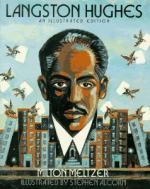|
This section contains 1,694 words (approx. 6 pages at 300 words per page) |

|
A Reflection of the Treatment of African Americans in the 1920's and 30's
Summary: African American migration to the north as presented through Langston Hughes' poems.
In the time between World War I and World War II, African Americans faced many forms of discrimination. After World War I, during the 1920's, some 800,000 African Americans moved north to cities such as Detroit, New York City and Chicago due to the harsh treatment they faced in the South. However, the North was not free of bigotry. Langston Hughes, a famous African American poet and author, wrote many poems describing the treatment of African Americans and their struggle to survive. Hughes' poems reflect the treatment of African Americans in the 1920's and 30's in a very realistic manner regarding: education, housing, and racist organizations.
During the 1920's and 30's educational opportunities for African Americans were becoming more available than ever before. Between 1915 and 1930, "hundreds of thousands of African Americans moved northward" due to "job opportunities and the prospect of higher wages" (Boyer, 1995, 603). In Northern cities, the economic...
|
This section contains 1,694 words (approx. 6 pages at 300 words per page) |

|


